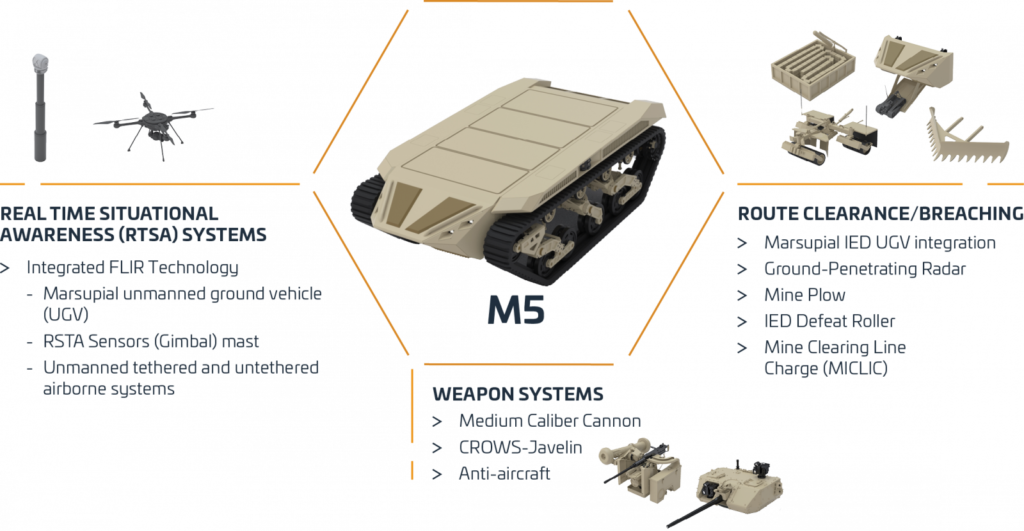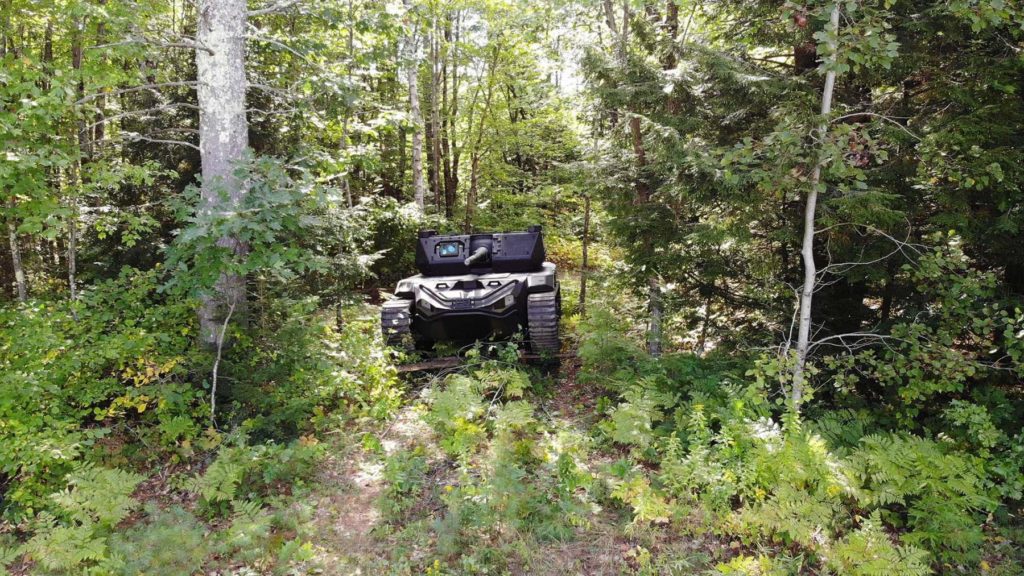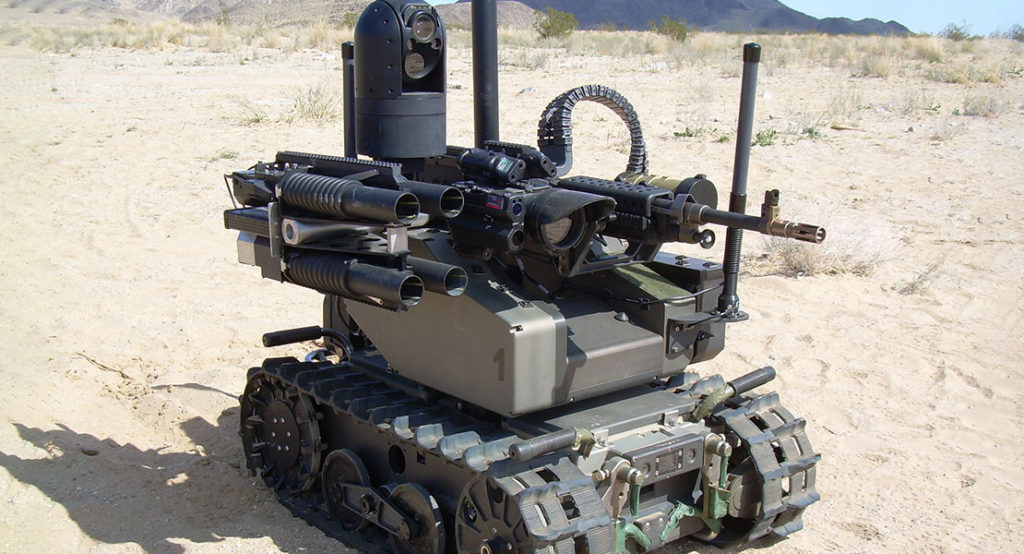As we discuss in our ongoing 3D Printing Drone Swarms series, additive manufacturing (AM) will play an increasing role in the production of all manner of semi-sentient robots. This has been demonstrated by unmanned aerial vehicles (UAVs), which are now being made in part with 3D printing for lightweight, custom designs. For this reason, we expect AM to be used for other drone-style bots as well, often for military purposes.
War is changing. Now, countries and non-state actors can deploy drones and defeat artillery, armor, bases, and infantry without putting their own pilots at risk. Devastatingly effective unmanned aerial vehicles (UAVs) are now growing in influence. Democracies and dictatorships alike can deploy a lot of power with little political risk for themselves.
So, drone strikes are more likely in the future. Whereas airborne drones are the ones that get the most press now, land- and sea-based drones are likely to see a lot of attention in the future. Why is this relevant? A major manufacturing technology for all manner of unmanned vehicles is 3D printing. We give them the low-volume, weight-saving parts that they need. Because of this, we’re going to be looking at ground-based fighting robots today.
These vehicles are now sometimes autonomous, but can also be remotely driven. Some of them are controlled over the horizon, perhaps even from another continent, via data links and video. Still others are rather large versions of an RC car. Some are simple follow-me robots. Some are mountable. And others can be all of the above: optionally mountable, remote controlled or autonomous.
There are vehicles meant as ground-based loitering munitions, in essence a moving land mine that can be detonated at will, while others are meant to guard an area long term. Yet other unmanned ground vehicles are meant to replace troops and armor in combat. Traditionally these machines—such as the Packbot, with over 2000 deployments—have been used sparingly in applications such as ordinance disposal and reconnoitering tasks for special forces. Now, they are entering service with mainline units and becoming battle-hardened.
Traditionally, there has been a lot of worry about killer robots or autonomous mini-guns roaming the countryside. Now, the world’s planners will probably opt for an approach with a human in the loop, in which an individual can be patched into 100 vehicles to make critical decisions when appropriate. For much of their lives, these systems look to be autonomous, however.
Israel is a forerunner in drones, using relatively dumb decoys to war-winning effect. They were sent in ahead of combat aircraft, enemy radars turned on and locked firing missiles. The missile and radar installations were duly tracked from nearby fighter bombers and taken out. This was in the Yom Kippur war in 1973, where they used Firebee targeting drones to essentially win the conflict. A same wild-weasel strategy was deployed in the First Gulf War by the U.S. to take our Iraqi air defenses. Since Israel has been aware that drones can be war winners for 50 years, it’s no surprise that they lead in ground-based unmanned vehicles, as well.
The land-based Guardium drone, made by G-NIUS a joint venture between IAI and Elbit, is now operational. The remote vehicle is meant to guard borders and can be autonomous or remotely operated. It can be armed and has targeting systems on board. Yet, the march of the robots to war-fighting supremacy is not going to be a direct path. This front-running joint venture closed in 2016. What’s more: around a dozen or more vehicles that I looked at for this post were no longer available or were made by companies that had shut down their businesses.

The Textron M5 is a modular system that can act as a base from a wide variety of missions and types of craft. With a composite track, this lightweight vehicle can be configured to be an air droppable tank-style unit, a loitering surveillance system, or a kind of shock vehicle to penetrate denied-access areas.

The M5 is also called the Ripsaw, and, to planners, could be a very compelling proposition. Imagine giving paratroopers access to javelin missiles to protect themselves from tanks, or imagine giving a lightweight force a vehicle to provide additional air defense. I think that turning one of these in a mortar platform or a recoilless weapon could be a real force multiplier. Since most of the armor on regular vehicles is used to protect the troops, operating these machines could be lightweight and easily used in air transports. They could also be air droppable.
The wingman concept is used to sell this sort of technology. Tethered drones are also usually included in such a concept. So, its’ a force protection and extension kind of a strategy. Every battalion its own drone, air defense, anti-tank squad that can help defend the soldiers. Germany’s Rheinmetall has a similar concept to the M5, but it is anchored by two technology packages, Wiesel Digital and UGV Mission Master, that could extend autonomous and sensing capabilities to many vehicles. The Wiesel platform already includes mortar carriers and a wide array of solutions, so this could be an extended family of products.

The UK’s QinetiQ has the MAARS, the cutest robot that will kill you. This has a strongly specific inclusion of “detainee riots” as one of its missions. Nope, not terrifying at all. BAE Systems released its Robotic Technology Demonstrator in 2019. Described as a “rolling lab”, the company is probably the most direct in the state of the technology now. Whereas UAVs are seeing huge investments and deployments, weaponized ground vehicles are far more modestly researched and deployed. One easy-to-implement solution would be Kairos’ package to convert a regular vehicle into an unmanned one rather simply. Other than that, it seems like on-the-ground autonomy will be a tougher slog.
Subscribe to Our Email Newsletter
Stay up-to-date on all the latest news from the 3D printing industry and receive information and offers from third party vendors.
You May Also Like
IperionX Inks 10-Year Deal with Wisconsin Manufacturer for 80 Metric Tons of Titanium Per Year
IperionX, the Charlotte-based supplier of sustainable titanium powders used for additive manufacturing (AM) and metal injection molding (MIM), has signed a ten-year deal with United Stars, a group of industrial...
Gastronology Launches Industrial Production of 3D Printed Food for Dysphagia Patients
Food 3D printing has, in many ways, been an additive manufacturing (AM) segment looking for the right business case. While some applications are beautiful and others may or may not...
Lockheed Martin Leads $3M Investment in Q5D’s Electronics 3D Printing System
Q5D, an original equipment manufacturer (OEM) of robotic arm, hybrid additive manufacturing (AM) systems used for wire harness production, has closed a $3 million investment round. The investment arm of...
3D Printing News Briefs, April 6, 2024: Depowdering, Cybertruck Door Handles, & More
In today’s 3D Printing News Briefs, ioTech’s digital manufacturing CLAD technology is opening up opportunities for microelectronics and additive manufacturing. Hexagon and Raytheon Technologies commercially released the Simufact Additive Process...































